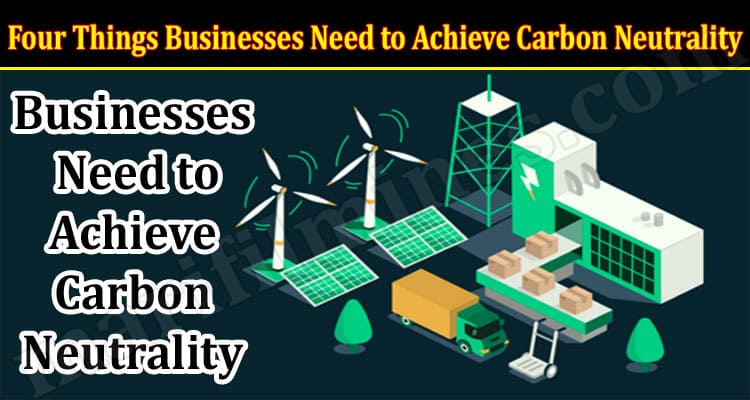Achieve Carbon Neutrality: As global temperatures continue to rise, businesses the world over are looking for ways to mitigate their impact on the climate. From offsetting carbon footprint to reducing plastic pollution and preserving biodiversity, there are many actions businesses can take to fight climate change – but all of them require four crucial elements.
Transparency
The first and most important aspect of climate action for businesses is transparency. Before they can claim to want to mitigate their impact on the environment, companies have to be transparent about exactly what that impact is. That means calculating carbon emissions based on Scope 1, 2 and 3 definitions, and detailing the step being taken to reduce them. It also means recognizing the impact their activities have on water, the soil and biodiversity.
Sustainability reports are a great way to communicate transparently about these impacts. Many regulators around the world are passing more stringent climate reporting requirements, especially for large companies. For instance in the US, the Securities and Exchange Commission recently published proposed climate disclosure rules for listed companies. These would require the disclosure of Scope 1 and 2 emissions in annual investors reports.
This type of development shows that governments and investors know there cannot be climate action without transparency, and companies that remain opaque about their impact will soon face difficulties in raising capital, as well as potential fines.
Traceability
When businesses take action to offset their environmental footprint, it is crucial that they make these actions traceable. When regulators, consumers and investors can’t follow corporate actions from strategic decisions to funding to final impact, companies are more likely to be accused of greenwashing: selling themselves as “sustainable” without being accountable.
For instance, the ClimateTrade marketplace allows the traceability of all carbon offsetting transactions thanks to blockchain technology: every transaction performed on blockchain is immutable and accessible to everyone, which makes fraud practically impossible.
Concretely, it means that companies and their investors can “follow the money”, from corporate accounts to the specific projects they have chosen to offset their carbon footprint. Each transaction triggers the emission of a carbon offsetting certificate containing project information and a unique blockchain key. This type of traceability makes the work of reporting on climate actions much easier and reliable for companies.
Standardization
It is important to note that the current lack of standardization in carbon markets makes it difficult for companies to set quality benchmarks. Outside of mandatory markets like the EU Emissions Trading System, there is currently no regulation around the generation or pricing of carbon credits by sustainable projects around the world.
That’s why it is crucial to ensure carbon mitigation projects have been verified by well-known standards like Verra, CDM or Gold Standard. These international organizations emit certificates after the external audit of projects, making sure that they deliver their stated impacts.
Another way to ensure standardized impact in climate action is to leverage the UN Sustainable Development Goals (SDGs): each of the 17 SDGs comes with a long list of specific actions. Assessing a climate change mitigation project against these action items is a great way to measure their impact holistically.
Collaboration
Climate change is a global issue affecting individuals, companies and communities of all sizes. Companies would be remiss to try and tackle it on their own. Instead, they should collaborate with their peers as much as possible. Many already work with sector-specific organizations on topics related to public policy and market trends, so decarbonization can easily be added to the list.
Companies should also work with governments, helping them shape the course of climate regulation in a way that doesn’t stifle innovation or competitiveness. For instance, the SEC is currently gathering feedback on the proposed climate disclosure rules, and many business organizations have responded.
Finally, companies should work with their investors and customers to gauge their specific expectations and come up with creative solutions to meet them. Investors are making it clear that transparency and action on Environmental, Social and Governance (ESG) issues are pre-requisite for future funding, and conscious consumers are becoming more and more demanding on environmental and social issues. Listening to these stakeholders and taking climate action now is a great way for companies to set themselves apart from competition and remain ahead of the curve.

